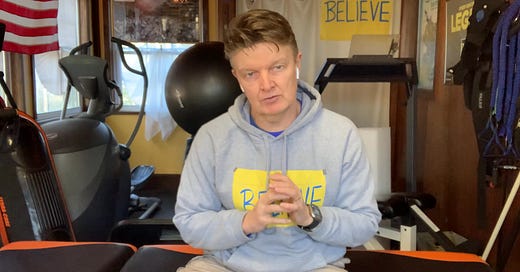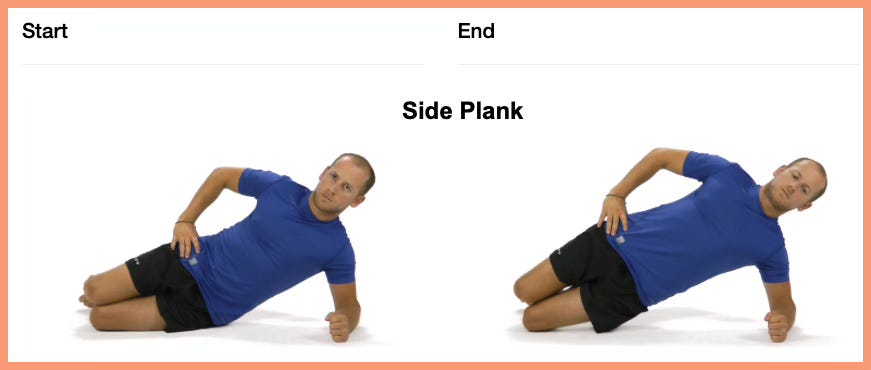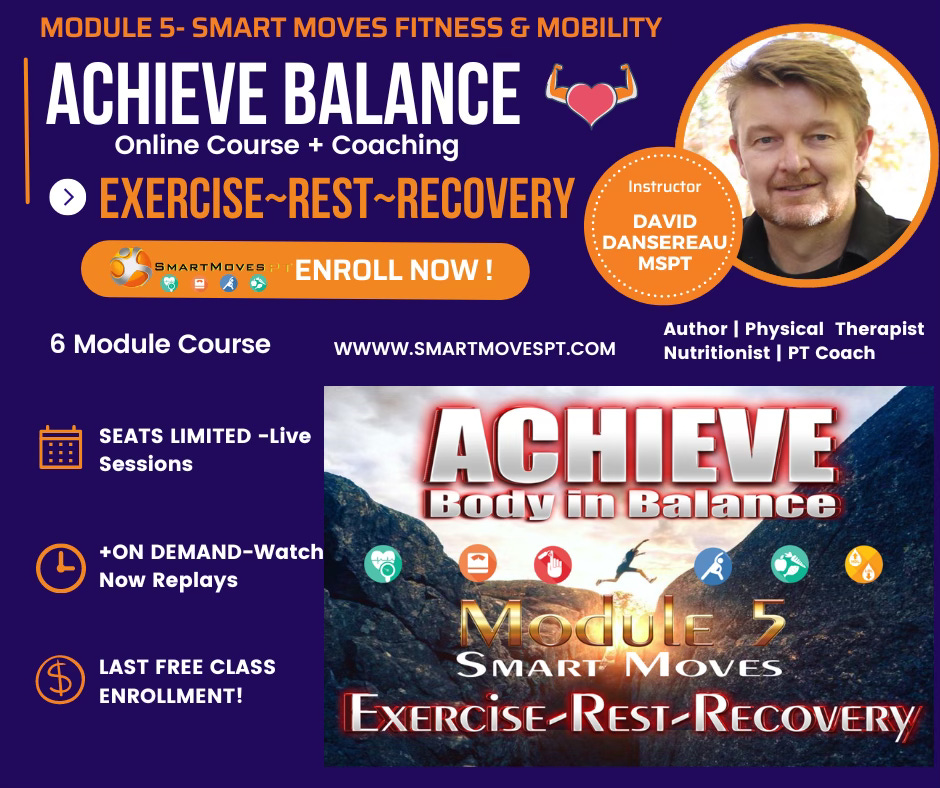Many of us are pressed for time, and so are most of my clients. So here’s what I advise them to do.
If they are going to cut corners on their routine, I advise them not to skip this top “Exercise Snack” in their program. (I use the term ‘exercise snack’ only because it seems to be the fitness buzzword these days- look it up!)
In reality however, I would suggest the exercise sequence I will demonstrate in this article should be a staple of your routine, not just a snack, especially if you sit for work or have to drive long distances in a car or plane for travel.
What would it be… of course the McGill Big 3!
If you haven’t heard of the big 3 you should consider adding these in to your core program. They work!
I’ve been doing these for the past 10 years without fail. In fact, I was pressed for time this morning after my run, I stretched and worked in these three exercises in less than 6 minutes.
What is the McGill Big 3?
I first heard of the work of Stuart McGill during my graduate school training in physical therapy back some 20+ years ago. At the time he was doing interesting work connecting EMG sensors to back muscles to identify which core exercises were safest for disc loading and most effective in recruiting core muscles in spine rehabilitation. Now he’s all over health podcasts and interviews on YouTube, you should look him up for sure.
Here’s the Short on Stuart McGill
McGill is a renowned spine biomechanist, developed the "McGill Big 3" core stabilization exercises to enhance spinal stability, reduce lower back pain, and improve performance. These exercises focus on muscular endurance and proper bracing mechanics rather than excessive spinal motion.
The Science Behind the McGill Big 3
Core Stability vs. Core Strength
Traditional core exercises often emphasize spinal movement (e.g., crunches, sit-ups), which can increase shear forces and stress on the lumbar spine.
McGill's approach prioritizes spinal stability by activating deep core muscles (multifidus, transverse abdominis, and obliques) to resist movement rather than create it.
The Neutral Spine Concept
Keeping the spine in a neutral position during movement reduces strain on spinal structures.
These exercises train the core muscles to work in coordination to maintain a stable spine under load.
Endurance Over Strength
Research suggests that muscular endurance, rather than maximal strength, is a key factor in preventing back pain.
The Big 3 exercises are designed to build endurance and coordination for sustained spinal support.
Here they Are-The McGill Big 3 Exercises
1. Curl-Up (Anti-Flexion)
Targets: Rectus abdominis, transverse abdominis
Purpose: Trains the core to resist excessive spinal flexion while engaging stabilizing muscles.
Key Technique:
Lie on your back with one knee bent and one leg straight (reducing lumbar stress).
Place hands under the lower back to maintain a neutral spine.
Lift the head and shoulders slightly off the floor, keeping the neck in a neutral position.
Hold for a few seconds, then lower slowly.
2. Side Plank (Anti-Lateral Flexion)
Targets: Obliques, quadratus lumborum, transverse abdominis
Purpose: Strengthens lateral stabilizers, reducing side-to-side spinal instability.
Key Technique:
Lie on your side, elbow under shoulder and feet stacked or staggered.
Engage the core and lift the hips, creating a straight line from head to feet.
Hold, then switch sides.
3. Bird Dog (Anti-Rotation)
Targets: Multifidus, erector spinae, glutes, core stabilizers
Purpose: Enhances coordination between the core and hip musculature, resisting rotational forces.
Key Technique:
Start in a quadruped (hands-and-knees) position.
Engage the core and extend one arm and the opposite leg simultaneously, keeping the torso stable.
Hold briefly, return to the starting position, and switch sides.
Clinical Applications & Benefits
Reduces lower back pain by reinforcing proper movement mechanics.
Enhances athletic performance through core control and endurance.
Prepares the spine for daily and sport-specific movements by improving bracing strategies.
Ideal for rehabilitation and injury prevention, especially for those with chronic back issues.
How a PT like me would progress the Big 3:
Progressions & Modifications for the McGill Big 3
To ensure safe and effective progression, the McGill Big 3 exercises can be adapted based on fitness level, injury status, and individual needs. Below are beginner, intermediate, and advanced progressions for each exercise.
1. Curl-Up (Anti-Flexion Exercise)
Beginner Modifications:
Reduce Range of Motion (ROM): Lift head and shoulders only slightly off the ground.
Shorter Holds: Hold for 3 seconds before lowering.
Use Arm Support: Place arms crossed over the chest if lifting is too difficult.
Intermediate Progression:
Increase Hold Time: Hold for 5-10 seconds before lowering.
Add Pulses: Perform small controlled pulses while maintaining a neutral spine.
Advanced Progression:
Add Resistance: Hold a light weight or plate on the chest.
Perform Alternating Leg Raises: Keep the neutral spine and lift the straight leg a few inches off the floor while holding the curl-up position.
2. Side Plank (Anti-Lateral Flexion Exercise)
Beginner Modifications:
Knee Side Plank: Instead of balancing on your feet, rest on your knees while keeping a straight line from your shoulders to your knees.
Reduce Hold Time: Start with 5-10 seconds and gradually increase.
Use a Wall for Support: Perform a standing side plank against a wall for core activation without full body weight.
Intermediate Progression:
Full Side Plank on Feet: Hold the standard side plank position for 20-30 seconds.
Staggered Feet Position: Instead of stacking the feet, place one foot slightly in front for added stability.
Advanced Progression:
Add Hip Dips: Lower and raise the hips in a controlled motion.
Elevated Side Plank: Place the feet on a bench to increase difficulty.
Single-Leg Side Plank: Lift the top leg while maintaining plank stability.
3. Bird Dog (Anti-Rotation Exercise)
Beginner Modifications:
Reduce ROM: Lift only the arm OR the leg at a time, instead of both simultaneously.
Hold for Shorter Time: Start with 3-5 seconds per rep.
Perform Near a Wall: Press the extended foot against a wall for added feedback and support.
Intermediate Progression:
Full Bird Dog: Extend opposite arm and leg simultaneously, maintaining balance for 5-10 seconds.
Add a Resistance Band: Use a light resistance band around the hands or feet for increased core demand.
Advanced Progression:
Slow Eccentric Lowering: Lower the arm and leg very slowly to challenge stability.
Bird Dog with Dumbbell/Kettlebell: Hold a light weight in the extended hand to increase difficulty.
Bird Dog Rows: While in a quadruped position, perform a row with the free arm while keeping the core stable.
Final PT Tips for Progression
✅ Master the Basics First: Before advancing, ensure proper form and core engagement.
✅ Increase Time Under Tension Gradually: Extend hold durations and reps as endurance improves.
✅ Incorporate Breathing Techniques: Use bracing and diaphragmatic breathing to enhance spinal stability.
✅ Listen to the Body: If an exercise causes pain (especially in the lower back), regress to an easier version before progressing.
Fit Them In- Here’s How!
If you're pressed for time like my clients, the McGill Big 3 can be incorporated efficiently into your routine in just 10-15 minutes per session (less once you’ve mastered your own flow) .
Here’s how to work them in based on different schedules and needs to help you eliminate excuses too!
1. Quick Daily Routine (10-15 Minutes)
💡 Best for:
Desk workers, chronic back pain sufferers, and those needing daily core activation
Curl-Up – 3 sets of 6-10 reps (5-10 sec holds)
Side Plank – 2 sets per side (10-30 sec holds)
Bird Dog – 2 sets of 6-8 reps per side (5 sec holds)
Do this daily or at least 5x per week for best results.
2. Strength Training Warm-Up (5-10 Minutes)
💡 Best for:
Gym-goers, athletes, and lifters who want better core activation
Perform one round before lifting:
Curl-Up – 6 reps (5 sec holds)
Side Plank – 15 sec per side
Bird Dog – 6 reps per side
This activates core stability, reducing injury risk and improving performance.
3. 3x Per Week Focused Core Session (15-20 Minutes)
💡 Best for:
General fitness and building core enduranceMonday, Wednesday, Friday Routine:
Curl-Up: 3 sets of 8-12 reps
Side Plank: 2-3 sets per side (20-30 sec holds)
Bird Dog: 3 sets of 8 reps per side
Optional: Add a modified progression (e.g., hip dips, slow eccentrics) as you get stronger.
4. Integrated Into Other Workouts (Minimal Time)
💡 Best for:
Busy individuals wanting to "sneak in" core work
Between Lifting Sets → Do Bird Dog as an active recovery exercise.
During TV Time → Perform a Side Plank while watching.
After a Run or Walk → Use Curl-Ups for post-workout spinal support.
Final Tips for Consistency
✅ Pair it with an existing habit (e.g., morning coffee, post-gym cool-down).
✅ Even just 5 minutes is better than nothing—focus on quality over quantity.
✅ Listen to your body—adjust intensity based on fatigue and soreness.
If you would like a personalized routine based on your schedule and fitness level, reach out to me , message me below, or jump into my Achieve Balance Coaching Academy!


















Share this post